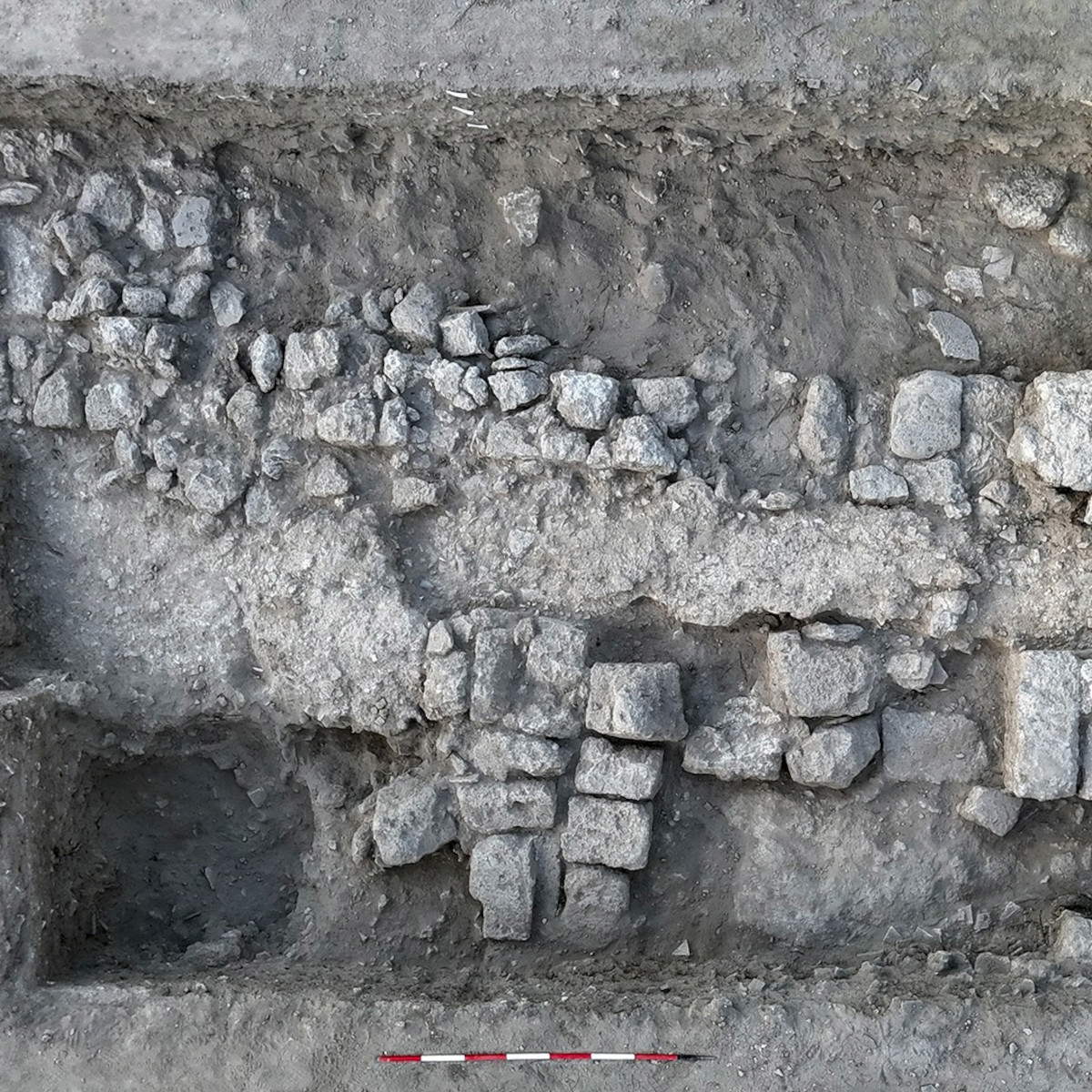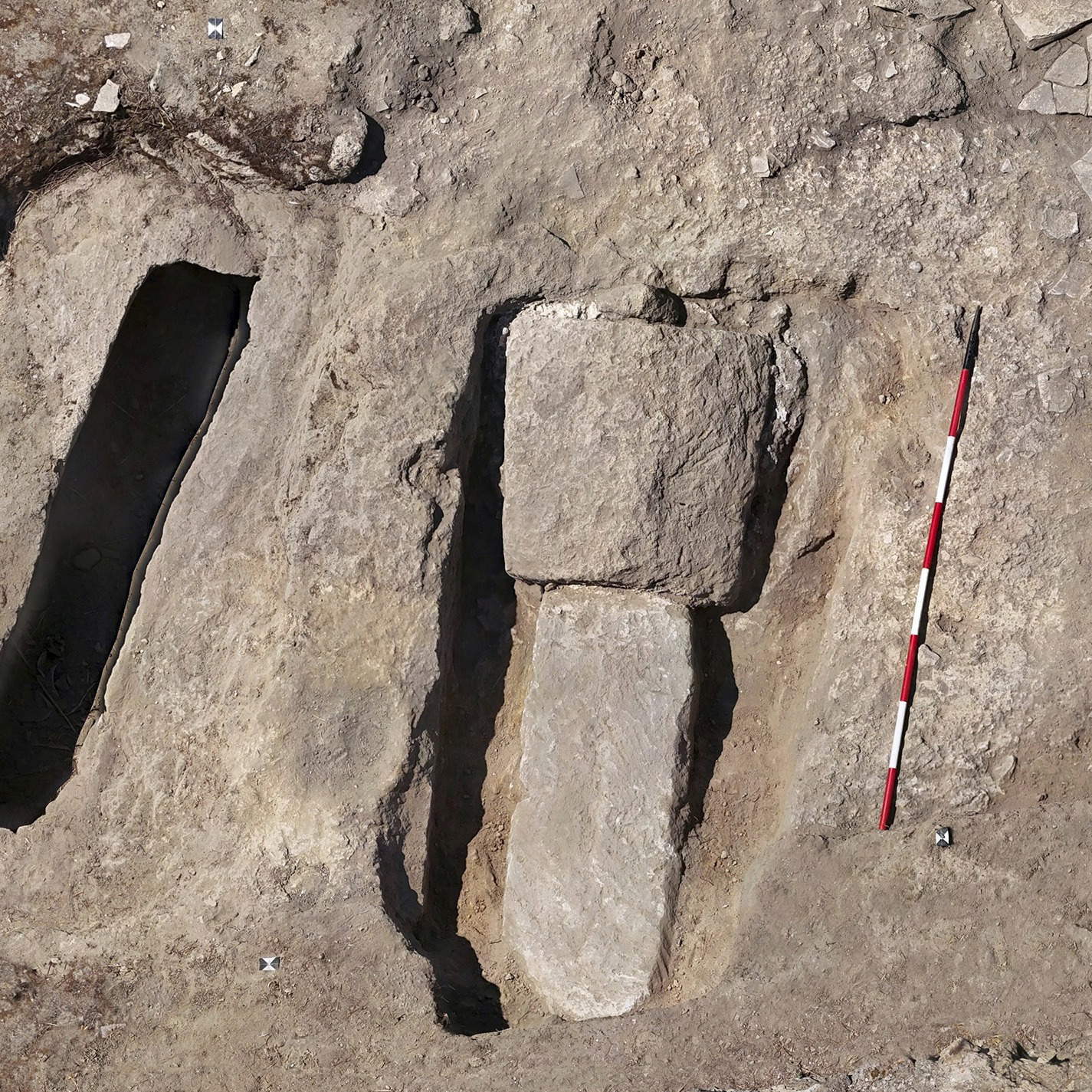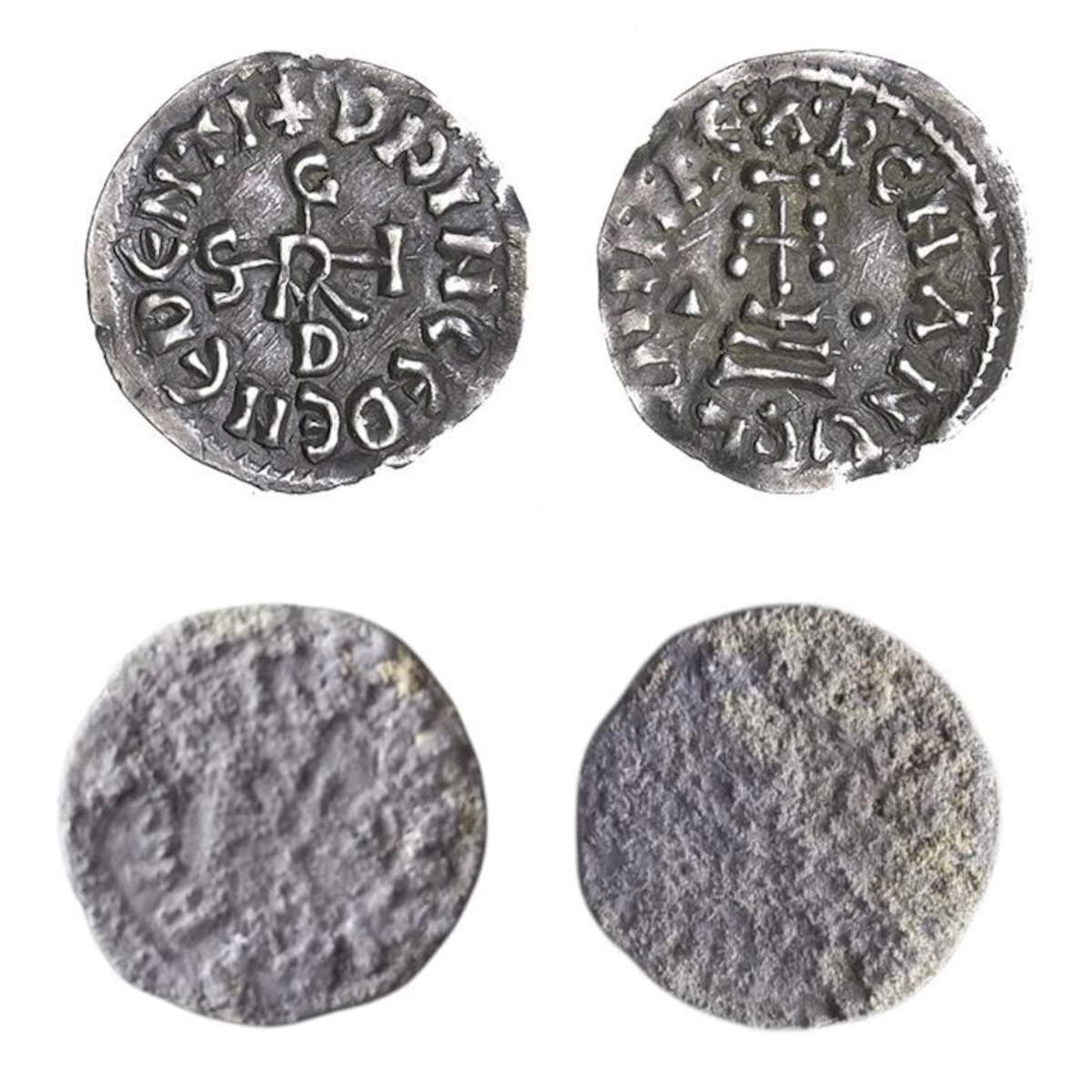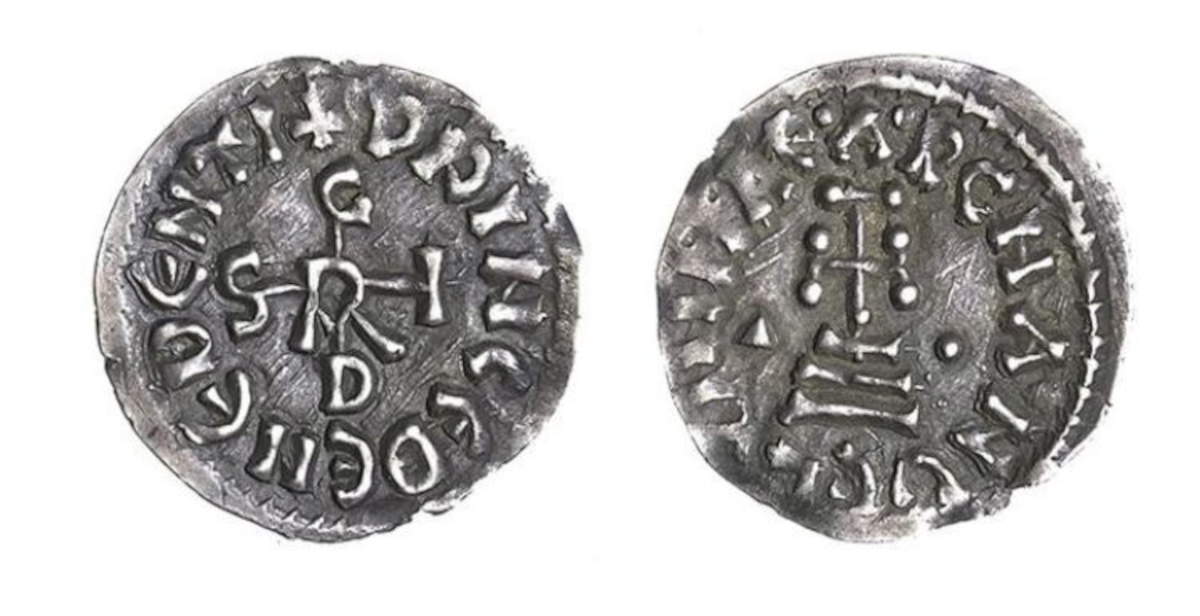A press conference dedicated to the first results of the 2025conducted excavation campaignby theUniversity of Salento in the area of Parco Montalbano in Oria, in the province of Brindisi, was held in Lecce on Tuesday, August 12, at the headquarters of the Soprintendenza Archeologia Belle Arti e Paesaggio for the provinces of Brindisi, Lecce and Taranto. The presentation was attended by Superintendent Antonio Zunno, the archaeological officer in charge for the Municipality of Oria Antonella Pansini, Oria Mayor Cosimo Ferretti and Paul Arthur, full professor of Medieval Archaeology at the University of Salento and president of the Society of Italian Medieval Archaeologists.
The talk illustrated the evidence that emerged during the archaeological investigations, which confirm the complexity of the city’s urban stratification and especially highlight the phases of life dating back to the Byzantine age. The area, located at the foot of the castle, had already returned between 2013 and 2015 part of a complex attributable to the 10th-11th centuries. On that occasion, a lead seal depicting St. Theodore, datable to the 10th century, had also been found, interpreted as a trace of diplomatic exchanges between the Byzantine governor of Durrës and members of local elites. The discovery, in any case, had not been publicly disseminated, and the size, function, and significance of the site still remained uncertain.

The current project is part of a program on the Byzantine heritage of southern Italy, coordinated by Professor Arthur and developed by five Italian universities. In fact, in 2023 the University of Salento had launched an initial documentation campaign, ascertaining the value of the area as an administrative and economic center of the Terra d’Otranto following the Byzantine reconquest of southern Italy by Emperor Basil I between 867 and 880. With a new ministerial grant, excavations resumed in 2025, allowing the characteristics of the site to be better defined and some aspects of city life to be reconstructed in a period between the arrival of the Byzantines and the Norman conquest of the city around 1062.
Before the Byzantine advance, Oria was under the rule of the Lombards of Benevento and probably served as a frontier stronghold. Byzantine forces were concentrated in the lower Salento, with a center in Otranto, and the city could have represented a strategic point opposed to a Byzantine garrison attested in Lecce, inside the Roman amphitheater, a hypothesis still being investigated by excavations directed by Giuseppe Muci of the Superintendency. Material evidence of the Lombard presence in Oria remains limited: in addition to two burials found in 1999 in Strabone Street, recent excavations have returned a silver coin minted by Prince Sicard of Benevento between 832 and 839, a sign of the relevance assumed by the center at that time.
The most substantial evidence, however, belongs to the Byzantine period. In addition to the structures identified in the 2013-2015 excavations, new buildings were brought to light in 2025, confirming the complexity of the building complex. The buildings, articulated in terraces and also carved out of the rocky bank with rocky rooms, have dry-stone foundations and elevations probably made of wood and unbaked bricks, with a height that could have reached two stories. The discovery of thin limestone slabs, documented in the past and found again in this campaign, suggests that the wooden floors were faced with stone, an indication of buildings intended for people of high rank.

The structures also had production functions. Fragments of millstones for milling grains, bases of presses for processing olives, as well as deer antlers and bone artifacts indicating the existence of a craft workshop were found. The scraps suggest the possibility that objects made of bronze and other materials were also made in this area. The administrative and military aspect of the complex is confirmed by the 10th-century lead seal and new findings of war apparatus. Also found in the campaign was an iron arrowhead and a bronze object interpreted as a mace head, an element that if confirmed would indicate the presence of Byzantine cavalry units.
In parallel, investigations deepened the study of a Byzantine necropolis identified north of the building complex. In one particularly elaborate burial, anthropologist Serena Siena noted a peculiar finding: the prevalence of female and child graves over male graves. An anomalous aspect that requires further investigation. The presence of decorated marble fragments and the proximity of the burials suggest the existence of a religious building in the immediate vicinity, perhaps a church connected to the cemetery. Frequentation of the area seems to stop after the 11th century. The deliberate demolition of the buildings may coincide with the construction of the Norman castle in the 12th century. The absence of structures along the slope of Montalbano Park would have guaranteed the new settlement a dominating position, with a view of the main communication routes, including the route of the ancient Via Appia.
The investigations have thus returned a useful set of data for the reconstruction of the settlement and production dynamics of the Terra d’Otranto in the Byzantine period, a period still little studied compared to the Messapic and Roman phases of Oria. Finds, structures and burials, now undergoing specialized analysis, make it possible to better define the role assumed by the city at a historical moment characterized by the Byzantine reconquest of southern Italy and the Arab threat from the Mediterranean.

The campaign was directed by Professor Arthur, with field activities coordinated by Paolo Marcato together with a group of students from the University of Salento and the Universities of Padua and Salerno. The anthropological study of the burials was conducted by Serena Siena, while the cataloguing of the finds was entrusted to Serena Musco. The Municipality of Oria supported the initiative thanks to the collaboration of Mayor Ferretti and Councillor Immacolata Torchiani. Collaborators also included Barsonofio Chiedi for logistics and Marco Leo Imperiale for scientific advice.
The continuation of the project over the next two years is expected to enable further discoveries, with the aim of filling the gaps related to the history of the city between the 9th and 11th centuries and enriching the knowledge of a crucial phase in the formation of the urban identity of Salento.
 |
| Byzantine Oria: tombs and monumental complexes discovered in Montalbano Park (Brindisi) |
Warning: the translation into English of the original Italian article was created using automatic tools. We undertake to review all articles, but we do not guarantee the total absence of inaccuracies in the translation due to the program. You can find the original by clicking on the ITA button. If you find any mistake,please contact us.